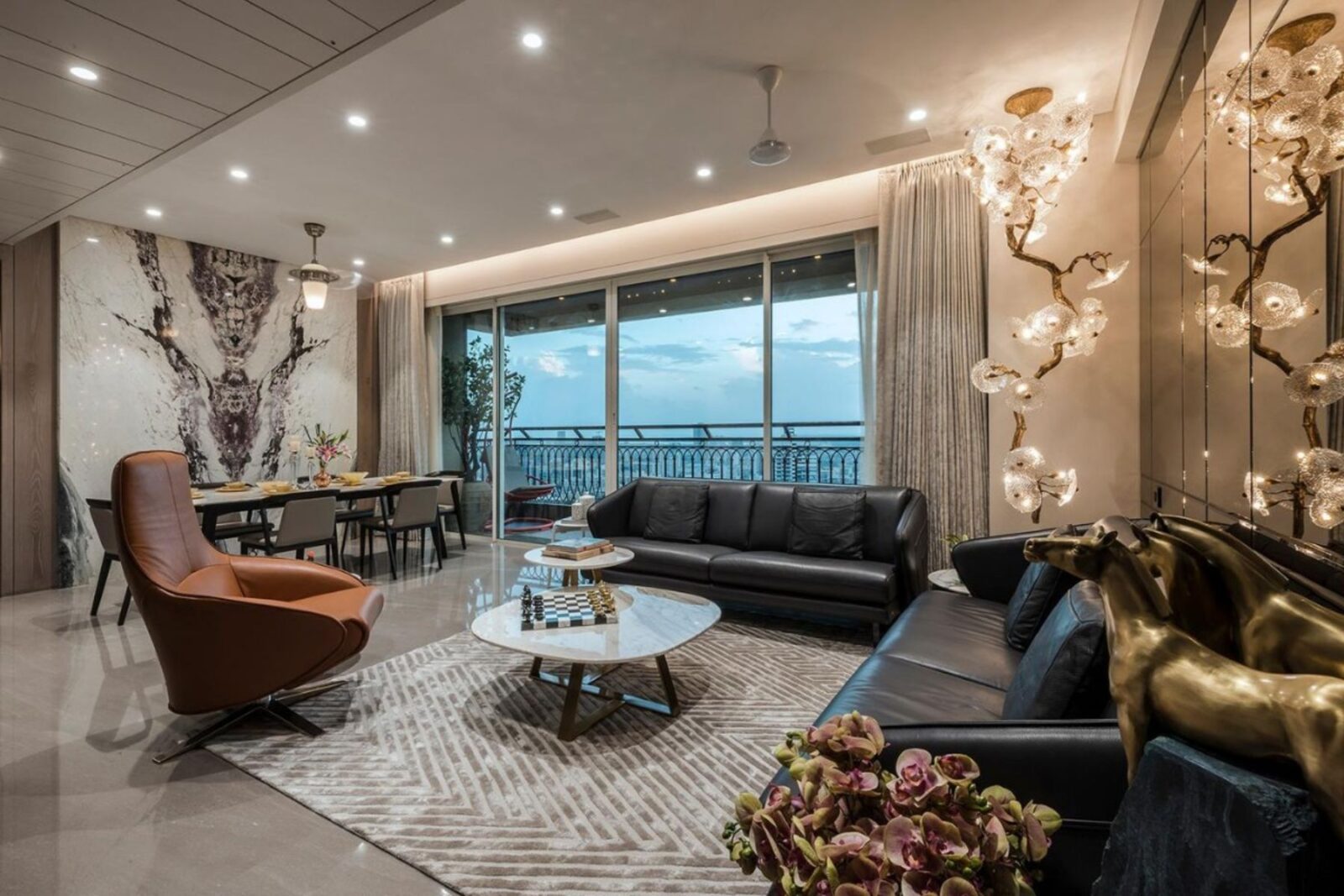When it comes to interior design, the combination of luxury and creativity plays a pivotal role in transforming a space into a sophisticated environment. High-end interior design is not just about using premium materials; it’s about blending innovative designs to create spaces that are not only beautiful but also functional and tailored to the client’s needs. This article explores the key aspects of high-end interior design and how innovative designs can make a significant difference in achieving a refined and elegant interior.
Understanding High-End Interior Design
High-end interior design refers to creating spaces that exude luxury, elegance, and exclusivity. It involves careful selection of materials, attention to detail, and a deep understanding of the client’s lifestyle and preferences. Here’s what sets it apart:
1. Quality Materials
One of the most critical aspects of high-end interior design is the use of top-quality materials. This includes natural stones, fine woods, high-grade metals, and luxurious fabrics. These materials not only enhance the aesthetic appeal of the space but also ensure durability and longevity. Whether it’s marble countertops, hardwood floors, or custom-made furniture, every element in high-end design is chosen for its superior quality.
2. Customized Solutions
Customization is a hallmark of high-end interior design. Instead of opting for off-the-shelf furniture and decor, designers create bespoke pieces that fit perfectly within the space. This could involve custom-built cabinetry, unique lighting fixtures, or made-to-order furniture. Customized solutions ensure that every aspect of the design is tailored to the client’s specific needs and preferences.
3. Attention to Detail
In high-end interior design, no detail is too small to be overlooked. From the stitching on a sofa to the placement of a light switch, every element is carefully considered to ensure harmony and balance in the design. This meticulous attention to detail contributes to the overall sense of luxury and sophistication in the space.
The Role of Innovative Designs in High-End Interior Design
Innovative designs are at the heart of creating unique and personalized spaces in high-end interior design. Incorporating creativity and innovation allows designers to push the boundaries and bring fresh ideas to life. Here’s how innovative designs can enhance high-end interiors:
1. Blending Traditional and Modern Elements
One way to incorporate innovative designs is by blending traditional and modern elements. For example, combining classic architectural details like crown molding with contemporary furniture can create a timeless yet fresh look. This blend of old and new adds depth and character to the space, making it feel both familiar and current.
2. Incorporating Technology
Technology plays a significant role in modern high-end interior design. Smart home systems, integrated lighting controls, and advanced climate control systems are just a few examples of how technology can be seamlessly integrated into the design. These innovations not only enhance the functionality of the space but also contribute to a sleek and modern aesthetic.
3. Sustainable Design Practices
Sustainability is an increasingly important aspect of innovative design. High-end interior designers are now focusing on eco-friendly materials, energy-efficient systems, and sustainable building practices. This not only reduces the environmental impact but also appeals to clients who are conscious of their carbon footprint. Incorporating sustainable practices in design is not only responsible but also adds a layer of sophistication to the space.
4. Creative Space Planning
Innovative designs often involve creative space planning to make the most of the available space. This could involve open-plan living areas, multifunctional furniture, or clever storage solutions. By rethinking the layout of a room, designers can create spaces that are both beautiful and functional, maximizing the use of every square inch.
Examples of High-End Interior Design with Innovative Designs
To better understand how high-end interior design and innovative designs work together, let’s explore a few examples:
1. Luxury Living Room
A high-end living room might feature a mix of rich textures and materials, such as velvet sofas, marble coffee tables, and metallic accents. Innovative designs could include a statement light fixture that serves as both a functional piece and a work of art. The use of large windows and open space allows natural light to flood the room, highlighting the luxurious materials and creating a warm and inviting atmosphere.
2. Elegant Kitchen
In a high-end kitchen, quality materials like quartz countertops and custom cabinetry are essential. An innovative design element could be the incorporation of smart appliances that blend seamlessly into the cabinetry, creating a clean and streamlined look. A carefully designed lighting plan ensures that the kitchen is both functional and stylish, with task lighting for cooking and ambient lighting for entertaining.
3. Sophisticated Bedroom
A high-end bedroom should be a retreat, offering comfort and luxury. Innovative designs might include custom-built storage solutions that hide clutter and keep the space organized. A statement headboard made from unique materials can serve as the focal point of the room, while high-quality bedding and textiles ensure comfort and elegance. The use of soft, neutral colors creates a calming atmosphere, perfect for relaxation.
Key Considerations for High-End Interior Design
When embarking on a high-end interior design project, there are several key considerations to keep in mind:
1. Client’s Lifestyle
Understanding the client’s lifestyle is crucial in high-end design. The space should reflect the client’s personality, preferences, and daily routines. This ensures that the design is not only aesthetically pleasing but also practical and functional.
2. Budget
High-end interior design often comes with a higher price tag due to the quality of materials and customization involved. It’s essential to establish a clear budget from the outset to ensure that the project stays on track and meets the client’s expectations.
3. Timelessness
While innovative designs are important, it’s also essential to create spaces that will stand the test of time. High-end interior design should not be overly trendy, as trends can quickly become outdated. Instead, focus on creating a timeless look that will continue to feel luxurious and relevant for years to come.
Conclusion
High-end interior design is a delicate balance between luxury and innovation. By using quality materials, paying attention to detail, and incorporating innovative designs, designers can create spaces that are both beautiful and functional. Whether it’s a living room, kitchen, or bedroom, the combination of high-end design and creativity results in a space that reflects the client’s unique style and provides a luxurious environment to live in.







